
In this resource, there are 21 moon phases activities and resources including a few printables, a song, activities, and more.
- Subject:
- Science
- Material Type:
- Activity/Lab
- Provider:
- Teach Junkie
- Author:
- Teach Junkie
- Date Added:
- 02/26/2019

In this resource, there are 21 moon phases activities and resources including a few printables, a song, activities, and more.

This activity is intended to introduce students to the distinction between vector and scalar quantities and to give them practice manipulating vectors (converting between X/Y and magnitude/angle representations) in a context that is concrete and easy to understand.
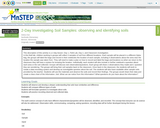
In this lesson, students collect 3 samples of soil from different outdoor locations, recording observations and questions about each location in their science notebooks. On the second day of the investigation, students will work in collaborative groups to investigate the soil using hand lenses, sifters/strainers, and sorting pans. Then students will share what they have learned with their peers.
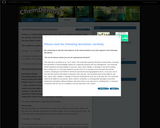
This animation shows the effect of change the volume of a gas phase equilibrium mixture where the numbers of reactant and product molecules are different.
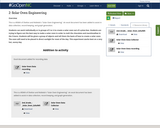
This is a REMIX of Shelton and Robledo's "Solar Oven Engineering". An excel document has been added to assist in data collection, record keeping, and graph generation.Students can work individually or in groups of 3 or 4 to create a solar oven out of a pizza box. Students are trying to figure out the best way to make a solar oven in order to melt the chocolate and marshmallow in the S’more. Students will be given a group of objects and tell them the basis of how to create a solar oven. The oven will need to be placed in direct sunlight for most of the day. This experiment works best on a very hot, sunny day.

Students can work individually or in groups of 3 or 4 to create a solar oven out of a pizza box. Students are trying to figure out the best way to make a solar oven in order to melt the chocolate and marshmallow in the S’more. Students will be given a group of objects and tell them the basis of how to create a solar oven. The oven will need to be placed in direct sunlight for most of the day. This experiment works best on a very hot, sunny day.
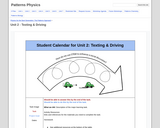
Students are confronted with a scenario of a student who is texting and driving in the school parking lot and they are tasked to determine the effect of various parameters to see if a student will collide with a pedestrian. Students must begin by breaking the scenario down into more manageable parts to determine what must be studied about the situation. Through a series of labs and activities, students learn how to model and predict situations with constant velocity and acceleration. Then, coding a spreadsheet, students model the complex situation of a texting driver, reacting, and braking during a potentially hazardous situation to create an evidence-based argument.

Students will create a musical pipe using straws of different lengths. They will create their own tune.

This parent guide supports parents in helping their child at home with the 2nd Grade Science content. Within the folder you will access Parent Guide PDFs in FIVE Languages: Arabic, English, Hindi, Spanish, and Vietnamese to help on-going communication with caregivers.

This resource accompanies our Rethink 2nd Grade Science Forces & Motion unit. It includes ideas for use, ways to support exceptional children, ways to extend learning, digital resources and tools, tips for supporting English Language Learners and students with visual and hearing impairments. There are also ideas for offline learning.

This resource accompanies our Rethink 2nd Grade Science Structures & Functions of Living Organisms unit. It includes ideas for use, ways to support exceptional children, ways to extend learning, digital resources and tools, tips for supporting English Language Learners and students with visual and hearing impairments. There are also ideas for offline learning.

This resource accompanies our Rethink 2nd Grade Science Matter- Properties & Change unit. It includes ideas for use, ways to support exceptional children, ways to extend learning, digital resources and tools, tips for supporting English Language Learners and students with visual and hearing impairments. There are also ideas for offline learning.

This resource accompanies our Rethink 2nd Grade Science Unit #3. It includes ideas for use, ways to support exceptional children, ways to extend learning, digital resources and tools, tips for supporting English Language Learners and students with visual and hearing impairments. There are also ideas for offline learning.

This resource accompanies our Rethink 2nd Grade Science Unit #5. It includes ideas for use, ways to support exceptional children, ways to extend learning, digital resources and tools, tips for supporting English Language Learners and students with visual and hearing impairments. There are also ideas for offline learning.
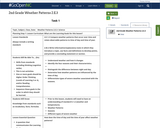
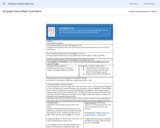
Relating the water cycle to computer programming by using simple robots to show the connection between the natural and digital worlds.
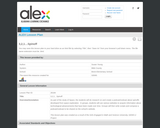
Students work collaboratively to research and record information about different spinoffs of space exploration. Using the information they find, students then write a script to be produced into a podcast or vodcast.

This animation illustrates the movement of the three basic waves associated with an earthquake and the effect of these waves on a building.

In this lesson, students will create a three dimensional model of a cell and then cut it in two to make a two dimensional view.
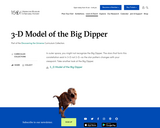
Students see firsthand that stars and constellations are not arranged in a flat, 2-D pattern in this Moveable Museum unit. The five-page PDF guide includes suggested general background readings for educators, activity notes, step-by-step directions, and a Big Dipper map. Students make their own 3-D models of the Big Dipper using readily available materials and examine their models, observing the 3-D constellation from new perspectives.